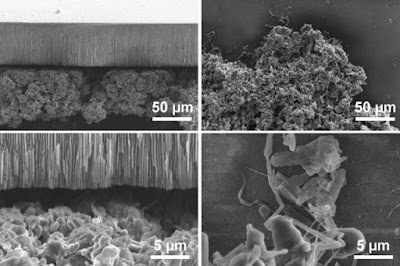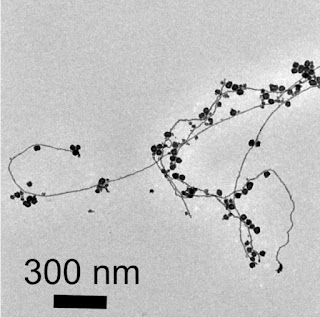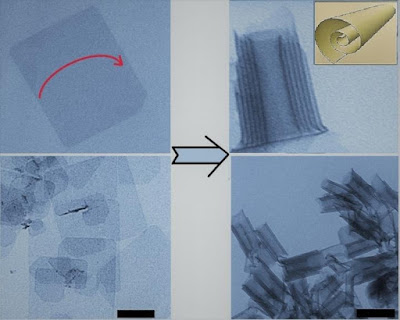In batteries, a metal reveals its dual personality
https://materialscience-nano.conferenceseries.com/
Branchlike deposits grow on lithium electrode surfaces in two ways, one much more damaging.
Source: MIT News
Full Story:
Battery masters have been focusing on lithium metal anodes as driving contenders for improving the measure of essentialness that batteries can store without growing their weight. However, lithium in this metallic casing has an issue that has disappointed a considerable measure of this examination effort: As the batteries are being charged, finger-like lithium stores shape on the metal surface, which can hamper execution and even provoke shortcircuits that mischief or cripple the battery.
Directly, a gathering of experts at MIT says it has finished the most low down examination yet of definitely how these stores shape, and reports that there are two through and through uncommon instruments at work. While the two sorts of stores are made out of lithium strands, the way they create depends upon the associated current. Packed, "congested" stores, which shape at low rates, wind up developing from their hidden establishments and can be for the most part easy to control. The significantly more meager and rapidly advancing "dendritic" projections turn out to be exactly at their tips. The dendritic kind, the researchers say, are harder to oversee and are responsible for a vast bit of the issues.
Their revelations are represented for the current week in the journal Energy and Environmental Science, in a paper by Peng Bai, a senior postdoc; Ju Li, the Battelle Energy Alliance Professor of Nuclear Science and Engineering and an instructor of materials science and planning; Fikile Brushett, a correct hand educator of compound building; and Martin Z. Bazant, the E. G. Roos (1944) Professor of Chemical Engineering and an instructor of science.
This investigation gives "focal exploratory and theoretical bits of information into the advancement of lithium metal, exhibiting that there are to a great degree two different kinds of improvement," Bazant says. In spite of the way that it was understood that such improvement occurs on lithium surfaces, this is the essential examination to show the two particular forms — congested, which grows bit by bit from the base, and dendritic, which extends rapidly from the creating tips.
While past research has constantly lumped the two sorts of improvement together under the broad term "dendrites," he says, the new work displays the correct conditions for each unmistakable advancement mode to happen, and how the congested kind can be by and large adequately controlled.
The root-creating congested advancement, the gathering found, can be deterred by including a separator layer made of a nanoporous aesthetic material (a wipe like material with little pores at the nanometer scale, or billionths of a meter over). The tip-creating dendritic improvement, by separate, can't be easily blocked, yet fortunately should not occur in helpful batteries. The commonplace working surges of these batteries are much lower than the trademark current related with the tip-creating stores, so these stores won't outline unless gigantic debasement of the electrolyte has happened.
On a fundamental level, supplanting traditional carbon-based anodes with lithium metal could slice down the middle the weight and volume of lithium-particle batteries, for a given measure of capacity limit and yield current, Bai clarifies. In any case, the inadequately comprehended event of these surface stores amid reviving has been a noteworthy obstruction to the advancement of such batteries.
Unless they are by one means or another controlled, Bai says, "those little strands can go directly through the separator [layer inside the battery] and cause blasts or flames."
Indeed, even shy of such demolition, the fibers step by step decrease the capacity limit of the battery and make it debase after some time. Presently, this exploration demonstrates that these developments can be adequately controlled at bring down current levels, for a given cell limit, and exhibits what as far as possible on battery execution would should be with a specific end goal to keep the genuinely harming dendritic fibers.
The separators that could obstruct the overgrown development are made of anodic aluminum oxide, or AAO, which is 60 micrometers thick and has all around adjusted, straight nanopores over its thickness. "It's a major revelation, since it answers the subject of why you now and again have better cycling [charging and discharging] execution when you utilize clay separators," Bai says. The exploration recommends that adaptable composite clay separators, for example, those made by covering artistic particles onto customary polyolefin separators, ought to be utilized as a part of lithium metal batteries to help hinder the root-developing overgrown lithium.
Bazant clarifies that most past research on the utilization of lithium metal anodes has been done at low flow levels or low battery limits, and as a result of that the second sort of development system had not been dependably watched. The MIT group completed tests at higher current levels that obviously uncovered the two particular kinds of development.
He says that the discoveries were made conceivable by his group's advancement of an imaginative lab setup, a glass slim cell, that "enables you to see the development, and you can see where there is this progress from one sort of development to alternate." Previous research had for the most part depended on electrical estimations to gather what was occurring physically inside the battery, yet observing it in real life made the distinctions clear. The moderate, overgrown development continues for some time, and after that at a specific level of present, "out of the blue, this little finger [of lithium] snaps out. It enables you to see precisely when the dendrites start."
The new discoveries will now give battery specialists a superior comprehension of the basic logical standards, and show "what are the confinements on rates and limit that are achievable," Bazant says.




Comments
Post a Comment